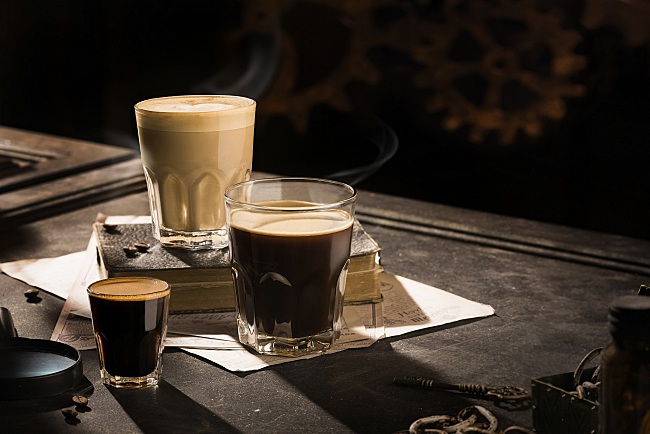Enjoying Food and Desserts with SOE Single Origin Espresso
Enjoying Food and Desserts with SOE Single Origin Espresso
Blog Article
Recognizing Coffee Beans: the Trip From Espresso to Blended Coffee Beans

The Beginnings of Coffee: A Worldwide Point Of View
While you could believe of coffee as a contemporary staple, its beginnings map back centuries, intertwining with cultures across the globe. The tale starts in Ethiopia, where legend says a goat herdsman named Kaldi found the invigorating impacts of coffee beans after discovering his goats romping energetically after consuming them.
As profession paths broadened, coffee made its way to Europe in the 17th century, quickly getting popularity. It changed from a magical drink into an everyday routine, intellectual exchanges and inspiring celebrations. Each culture added its one-of-a-kind twist to coffee preparation, enhancing its background. This international journey highlights how coffee links us, going beyond borders and uniting varied customs through an easy bean.
Growing and Harvesting of Espresso Beans
As coffee's journey advanced, the focus moved to the farming and harvesting of particular bean varieties, especially those utilized for espresso. You'll find that espresso beans commonly originate from Arabica or Robusta plants, each offering distinct flavors. The perfect growing conditions include high altitudes and rich, well-drained soil, which improve the beans' top quality.
Throughout the harvest, selecting approaches differ. In some regions, workers hand-pick ripe cherries, guaranteeing only the ideal fruit mosts likely to processing. In various other areas, mechanical harvesters are used, specifically on bigger ranches. When the cherries get to peak ripeness for optimum flavor., timing is crucial; you desire to collect.
Once collected, the beans are gotten ready for processing, which is essential in identifying their final preference. Understanding the cultivation and collecting processes gives you understanding into what goes right into your preferred coffee, enhancing your admiration for each and every cup.
Handling Approaches: From Cherry to Bean
Since you have actually discovered concerning harvesting coffee beans, allow's discover exactly how those cherries change right into the coffee beans you enjoy. You'll see just how various harvesting strategies effect flavor, complied with by the important actions of fermentation and drying. We'll damage down the milling and grading process that determines your coffee's high quality.
Harvesting Methods Described
When it comes to coffee, understanding harvesting techniques is important, because they directly impact the taste and quality of the beans you appreciate. Careful selecting entails hand-picking only ripe cherries, ensuring you get the best quality beans. Ultimately, the option of collecting method can considerably influence your coffee experience, so it's worth knowing just how those beans made it to your mug.
Fermentation and Drying
After harvesting, the next action in handling coffee beans play a significant duty in forming their taste. You'll locate that fermentation is crucial, as it aids break down the mucilage surrounding the beans, enhancing their preference profile. Depending on the approach, this procedure can last from a few hours to a number of days, with differing outcomes based upon temperature level and moisture.
Sun-drying permits the beans to soak up tastes from the atmosphere, while mechanical drying assurances constant moisture levels no matter of weather. Appropriate drying is important to stop mold and mildew and preserve the beans' high quality, inevitably influencing your mug of coffee.
Milling and Grading Process
As fermentation and drying established the phase for taste advancement, the milling and grading procedure warranties that just the finest coffee beans make it to your cup. This stage includes eliminating the outer layers of the coffee cherry, including the parchment and husk. Premium beans get a higher quality, resulting in a richer coffee experience.
Toasting Methods: Unlocking Taste Possible
When you roast coffee beans, the technique you select can significantly impact the taste account. Recognizing the partnership between time, temperature, and roasting strategies is key to exposing the possibility of your mixture. Allow's check out how these elements collaborated to create the excellent cup.
Roasting Techniques Described
While you might assume that all coffee roasting methods generate the very same results, the fact is that each method exposes special taste capacities in the beans. You can select between methods like drum toasting, air roasting, or perhaps typical pan roasting. Drum toasting utilizes a revolving drum to equally distribute heat, boosting caramelization and producing a well balanced flavor. Air roasting, on the other hand, flows warm air around the beans, promoting a lighter roast with obvious acidity. Pan roasting permits for hands-on control however calls for continuous focus to prevent burning. Each method has its nuances, so explore different strategies can assist you discover the perfect roast that lines up with your preference preferences. Enjoy the trip of discovering your optimal mug!

Effect On Taste Profile
Different roasting techniques not only affect the process however likewise substantially influence the taste account of the coffee beans. When you select a light roast, you'll experience bright acidity and flower notes, showcasing the bean's origin. In comparison, a tool roast equilibriums acidity with sweetness, frequently revealing chocolatey touches. Dark roasts, on the other hand, bring out strong, great smoky tastes, occasionally covering up the bean's one-of-a-kind features. Each technique reveals various oils and compounds, bring about a variety of tastes. By trying out different roasting styles, you can uncover which accounts reverberate with your taste buds. Understanding these subtleties assists you appreciate the virtuosity behind your mug of coffee, enhancing your overall experience with every sip.
Time and Temperature Level Elements
To release the complete taste capacity of coffee beans, both time and temperature during the toasting process play substantial functions. When toasting, you'll find that greater temperatures can quickly establish flavors, but if you rush it, you might end up with charred notes. On the other hand, reduced temperatures permit an extra steady flavor growth, showcasing the beans' one-of-a-kind features.

Timing is simply as important; expanding the my link roast as well long can lead to a loss of level of acidity and illumination, while as well short a roast might leave the beans underdeveloped. Discovering that sweet place needs practice and trial and error. By readjusting these factors, you can expose the rich, intricate flavors hidden within each bean, producing a genuinely amazing coffee experience.
The Art of Blending: Crafting Special Coffee Accounts

Start by choosing a base coffee that supplies a strong foundation. A brilliant Ethiopian bean can bring fruitiness, while an abundant Brazilian coffee adds body.
As you mix, bear in mind that each combination informs a story. You're not just making coffee; you're developing an experience. So, take your time, preference regularly, and delight in the journey of discovering your trademark mix.
Developing Techniques: How Preparation Influences Taste
Mixing coffee opens up a domain name of taste opportunities, but exactly how you make that mix can substantially affect your last mug. On the various other hand, a pour-over highlights the coffee's clarity and illumination, best for showcasing fragile notes.
Espresso, with its high stress, generates a focused shot that emphasizes sweetness and crema. If you choose a lighter brew, consider a cool mixture method; it yields a smooth, much less acidic taste.
Adjusting variables like water temperature, grind size, and brew time can change your coffee's account. Embrace the art of developing to uncover the tastes hidden in your coffee blends.
The Future of Coffee: Sustainability and Innovation
As the coffee industry progresses, sustainability and advancement are becoming important for dealing with environmental challenges and meeting customer needs. You'll observe that even more coffee business are taking on green practices, from sourcing beans ethically to applying sustainable farming strategies. These shifts not just assist the earth yet likewise boost the top quality of the coffee you appreciate.
You could see developments like naturally degradable product packaging and water-saving developing approaches that minimize waste. Advanced technology, such as blockchain, is additionally ending up being preferred, guaranteeing transparency in the supply chain, which enables you to map your coffee back to its origins.
On top of that, purchasing local areas and supporting farmers with reasonable profession initiatives cultivates an extra lasting coffee ecological community. As you sip your following mug, keep in mind that your selections can add to a brighter future for coffee. By going with sustainable brand names, you're not just appreciating a beverage; you're making a positive effect on the world.
Often Asked Questions
What Is the Distinction Between Arabica and Robusta Beans?
Arabica beans are smoother, sweeter, and have a higher acidity, while robusta beans are more powerful, extra bitter, and have more high levels of caffeine. When brewing your coffee., you'll discover these differences in taste and fragrance.
Just How Does Elevation Affect Coffee Bean Flavor?
Elevation effects coffee bean taste considerably. Greater elevations generate beans with brighter level of acidity and complicated tastes, while lower elevations usually produce beans that are much heavier and much less nuanced. You'll observe these differences in your cup!
What Are the Health Perks of Drinking Coffee?
Consuming coffee can boost your energy, enhance psychological focus, and even boost physical efficiency. It's rich in anti-oxidants, may reduce the risk of certain diseases, and can advertise a much healthier metabolism when eaten in small amounts.
Can Coffee Beans Be Reused for Developing?
Yes, you can reuse coffee beans for brewing, yet the taste could be weak. If you take pleasure in exploring, attempt reusing them in various means, like cool brews or including in healthy smoothies for an added kick.
Just how Should I Store Coffee Beans for Quality?
To maintain your coffee beans fresh, keep them in an impermeable container check it out in an amazing, dark area. Prevent exposing them to wetness, warm, or light, as these aspects can rapidly degrade their flavor and aroma.
Understanding Coffee Beans: the Trip her comment is here From Coffee to Blended Coffee Beans.
Currently that you've learned about collecting coffee beans, allow's explore exactly how those cherries change into the coffee beans you enjoy.When you roast coffee beans, the approach you choose can significantly affect the taste account - Single Origin Espresso.While you might assume that all coffee roasting methods yield the exact same results, the fact is that each strategy discloses distinct flavor potentials in the beans.Different roasting approaches not just influence the process but likewise substantially affect the flavor account of the coffee beans
Report this page